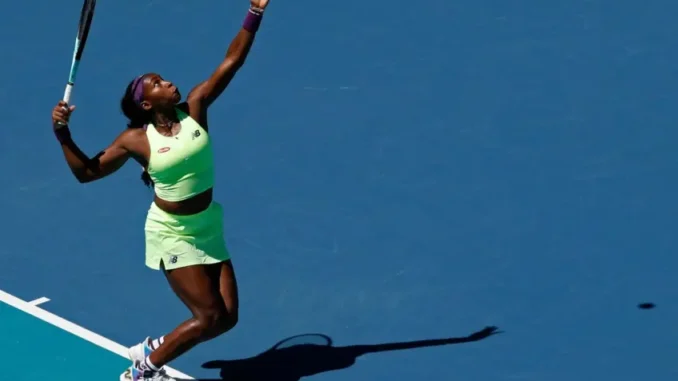
In the fast-paced, high-stakes world of professional tennis, where every swing of the racket can make or break a champion, Coco Gauff’s serve has become a hot topic of conversation. The 20-year-old American phenom, a Grand Slam winner and one of the sport’s brightest stars, has faced her share of struggles in 2025, particularly with her service game. Amid a season that’s seen her talent tested by inconsistency, a former Grand Slam semifinalist has stepped into the fray with a bold and intriguing theory about what’s behind Gauff’s woes—a perspective that’s as much about psychology as it is about technique.
Gauff’s journey has been nothing short of remarkable. Since bursting onto the scene as a teenage prodigy, she’s dazzled fans with her athleticism, tenacity, and a maturity beyond her years. Her crowning moment came in 2023 when she clinched the U.S. Open, a triumph that cemented her status as a global superstar. But tennis is a relentless sport, and even the best face turbulence. This year, Gauff’s serve—a shot that should be a weapon in her arsenal—has faltered at critical moments, leaving her vulnerable against top-tier opponents. Double faults have crept into her game with alarming frequency, and her once-reliable rhythm has seemed to slip away, prompting analysts and former players to dissect what’s gone awry.
Enter Andrea Petkovic, a retired German player who reached the semifinals of the 2014 French Open and has since carved out a reputation as one of tennis’s sharpest minds off the court. Known for her insightful commentary, Petkovic recently shared a theory that’s as compelling as it is unconventional. She believes Gauff’s serving struggles aren’t just a matter of mechanics—they’re a sign that the young star has unconsciously slipped back into old habits. “Something is not right with the serve,” Petkovic observed, her tone blending concern with curiosity. “It’s like she’s reverting to a version of herself she’s worked so hard to move past.” It’s a hot take that suggests Gauff’s challenges might be rooted in the mind as much as the motion.
Petkovic’s theory paints a vivid picture: imagine a player who’s spent years refining her craft, tweaking her serve under the guidance of top coaches, only to find herself haunted by the ghost of her former self. Gauff has indeed made adjustments over time—most notably after splitting with coach Brad Gilbert in 2024 and bringing Matt Daly onboard to overhaul her technique. The early results were promising; she stormed to a title in Beijing with a noticeably altered grip and a renewed sense of confidence. But as the season wore on, cracks appeared. In high-pressure matches, her second serve began to wobble, and the double faults piled up—19 in a single match at the U.S. Open, a statistic that stunned onlookers. For Petkovic, this isn’t just a technical glitch—it’s a mental loop, a subconscious retreat to patterns Gauff thought she’d left behind.
The idea resonates when you consider Gauff’s 2025 campaign. After a blazing start—winning her first nine matches and defending her WTA Finals title—the wheels began to wobble. Losses piled up, including a trio of defeats where her forehand errors skyrocketed alongside those troublesome serves. Petkovic’s analysis hints at a deeper struggle: the weight of expectation, the grind of a long season, and the challenge of maintaining growth when the spotlight burns brightest. “She’s achieved so much, but that can trick you into falling back on what feels familiar, even if it’s not what’s best,” Petkovic mused, offering a lens into the mental tightrope elite athletes walk.
Gauff herself has acknowledged the difficulty of mid-season changes. “You do something one way for so long, and then you have to correct it while you’re still playing matches—it’s tough,” she said after a recent tournament. Her words echo the complexity of rewiring a shot that’s been part of her game since she first picked up a racket. Daly, a biomechanics specialist, has focused on her grip and motion, aiming to smooth out the kinks. When it works, it’s a thing of beauty—crisp, powerful, and precise. But when it doesn’t, it’s a glaring chink in her armor, one that opponents like Iga Swiatek and Aryna Sabalenka have exploited with ruthless efficiency.
For fans, it’s a rollercoaster—moments of brilliance followed by frustrating lapses. Yet Gauff’s resilience shines through. She’s not one to shy away from the grind, and her self-awareness sets her apart. “I know what I need to improve,” she’s said, a quiet determination underscoring her words. Petkovic’s theory adds a layer of intrigue to Gauff’s narrative: can she break free from the past and reclaim her serve as a strength? As the season unfolds, the tennis world watches with bated breath, eager to see if this young titan can conquer her demons—both on the court and within.
Leave a Reply